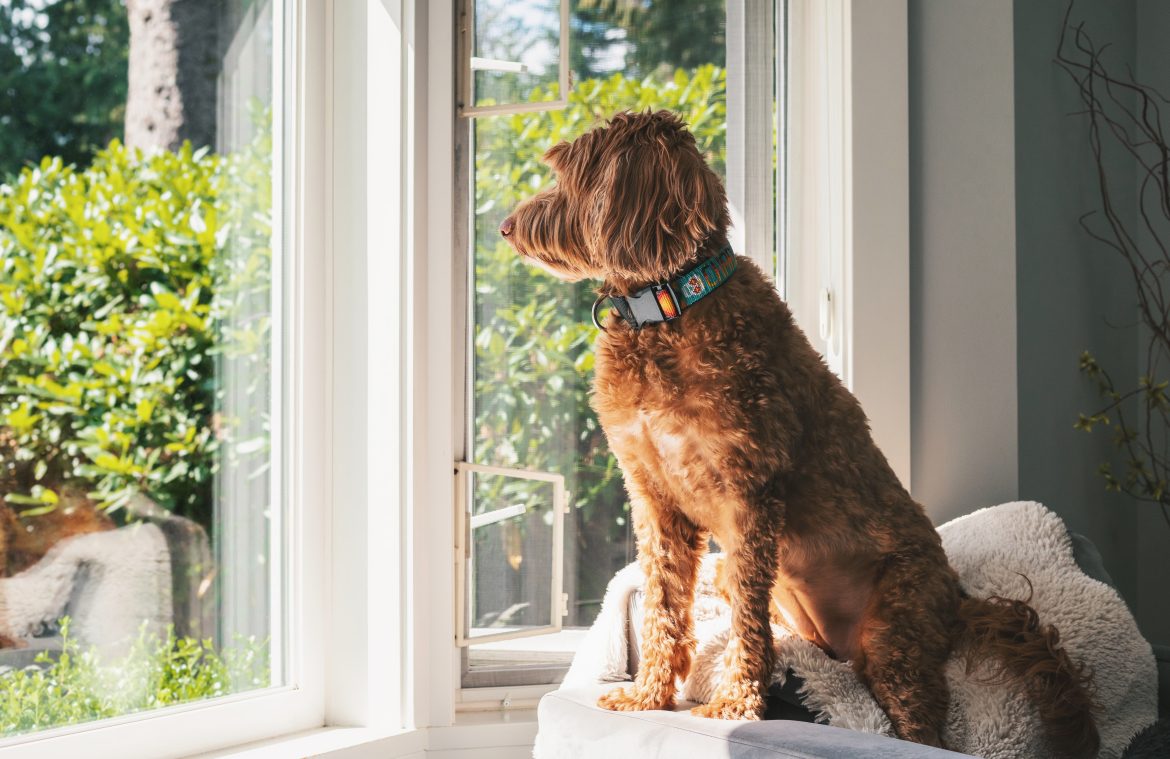One of the biggest choices pet owners face is whether their precious pup or kitty should be outdoor or indoor pets or have access to both. Each environment comes with its own set of benefits, challenges, and responsibilities, and what’s ideal often depends on the species, breed, climate, and lifestyle of both the pet and their owner.
In this guide, we’ll explore the pros and cons of indoor and outdoor living for cats and dogs and provide safety tips for whichever route you choose.
Indoor Pets
Benefits of Indoor Living
1. Increased Safety
Indoor pets are protected from common outdoor hazards which can include traffic, diseases, and exposure to extreme weather. The risk of injury or getting lost is significantly reduced when pets are kept inside.
2. Longer Lifespan
Indoor pets, especially cats, statistically live longer lives due to lower exposure to danger. Indoor cats, for example, can live 12–20 years, compared to 2–5 years for outdoor-only cats.
3. Better Health Monitoring
As a pet parent, it can be easier for you to spot any health issues your pet may have, as well as monitor their behaviour and maintain regular grooming and hygiene routines if your pet lives indoors.
4. Reduced Environmental Impact
Indoor cats are less likely to hunt native wildlife such as birds, lizards, and small mammals which can be a significant issue in some regions.
Challenges of Indoor Living
1. Limited Space and Stimulation
Without proper enrichment, indoor pets can become bored or stressed. This can lead to destructive behaviour, obesity, and mental health issues.
2. House Damage and Training Needs
Indoor living requires housetraining, litter management, and preventing your pup or kitty from chewing or scratching your furniture.
3. Less Exercise
Indoor pets need structured exercise to compensate for their lack of natural roaming.
Related: 7 Hidden Dangers in Common Household Items for Pets
Tips for Indoor Living
Indoor living can be a viable option if you give your pet the right care and stimulation. Here are some things you can do to create a suitable environment for your indoor pup or kitty:
- Provide daily play sessions for your cat or dog. This can give you an opportunity to engage with your pet and build a stronger bond and connection with them, while also giving them enrichment. Daily play can also include providing your indoor pet with puzzle toys for mental stimulation.
- Make sure your kitty has somewhere suitable to scratch, like a scratching post. Not only will this help keep them from scratching your furniture, but it will also give them a safe way to exercise their natural instincts to scratch.
- Create vertical space for cats (e.g., shelves, trees, or perches). This will give your kitty more places to perch and allow them to climb and explore without needing to go outside.
- Establish a consistent feeding and walking routine for dogs. A lack of space to run around indoors makes it even more important that your pup goes on regular walks for exercise and mental stimulation. All the sights and smells of a walk can be incredibly beneficial for your pup.
- Rotate toys to keep your pet mentally stimulated. Buy a variety of cat or dog toys, but don’t leave all of them out for your pet to play with all the time. Rotating their toys every so often gives a sense of newness to the toys, so your pet doesn’t get bored.
- Make time for social interaction, especially if you live alone. This includes interaction with humans other than yourself, and with other pets.
Outdoor Pets
Benefits of Outdoor Living
1. Natural Stimulation
Access to the outdoors allows pets to engage their senses, explore, and burn off energy. It supports their natural behaviours and instincts like sniffing, digging, climbing, scratching or hunting.
2. Independence and Freedom
Outdoor pets often have more autonomy and space to move, which can help reduce stress and boredom.
3. Fitness and Exercise
Outdoor environments often lead to pets expending more energy through more physical activity, which is especially important for high-energy breeds or working dogs.
Risks and Challenges of Outdoor Living
1. Exposure to Danger
Pets who are let outside can be put at risk from traffic, predators (including other dogs, wild animals, or humans), diseases, and theft. Poisonous plants, pesticides, and toxins may also be present outside, and curious pups or cats may find themselves coming in contact with these dangers.
2. Health and Weather Hazards
Outdoor pets may face hypothermia, heatstroke, dehydration, or frostbite depending on the climate and season it is where you live. Parasites such as fleas, ticks, and worms are more common outside.
Related: 5 Best tips to keep pets warm this winter – especially when they’re outside
3. Behavioural Issues
Without training and supervision, outdoor pets may develop territorial aggression. They may also wander far from home, or become difficult to control.
4. Shorter Lifespan (especially for outdoor cats)
Outdoor cats and some dogs are more vulnerable to accidents and illnesses, and this can reduce their life expectancy.
Tips for Outdoor Living
- Ensure your pet is microchipped and wears a collar with an ID. This can significantly increase their chances of returning to you should they go missing or run away.
- Provide sufficient shelter from sun, wind, rain, and cold. Cool patios, warm kennels and shady trees can all help protect your pet from the weather when they are outdoors.
- Make sure your yard is secure with fencing or walls to stop your pup from running out.
- Make sure you keep your kitty or pup’s vaccinations, flea/tick/worm treatments, and vet visits up to date.
- Supervise your pet’s outdoor time or use a leash/harness for safety, especially when they are not in a secure space such as a yard or enclosed park.
- Avoid letting your pets outside during peak traffic hours or harsh weather.
Indoor-Outdoor Compromise: The Best of Both Worlds?
Some pet owners opt for a blended approach, allowing pets indoor living with safe, supervised access to the outdoors.
Options for a dual approach include:
- Leash training cats and dogs for outdoor walks
- Catios (cat patios) to provide protected outdoor time
- Pet-safe gardens or enclosed yards for dogs (being cautious of not having plants in your garden that are toxic to your pet is very important).
- Scheduled outdoor time under supervision
This setup allows pets to enjoy nature while staying protected, although it still requires effort to maintain safety and boundaries.
Factors to Consider When Deciding
What are some things to consider when decider on having outdoor or indoor pets:
- Pet’s breed and temperament – Some pets are more active and independent and will thrive having room to run and play, while others are homebodies who are quite happy to stay inside napping.
- Health and age – Older or disabled pets may need more indoor care, while young, healthy pets may benefit from outdoor exercise.
Discover: Benefits of adopting a senior pet
- Your environment – Urban, suburban, or rural settings all present different risks and opportunities to encounter danger, but also different levels of access to safe play and outdoor time.
- Time and availability – Pets left outdoors unsupervised for long hours may experience anxiety or develop problematic behaviours.
There’s no one-size-fits-all answer. What’s most important is that your pet’s physical, emotional, and safety needs are being fully met.
Whether your pet is curled up on a couch or chasing butterflies in the yard, the goal is always the same: to provide a happy, healthy, and secure life.
Being prepared for risks like injury or illness is also important, whether your pets stay indoors, outdoors or a mix of both. The best and easiest way to be prepared is with pet insurance.
By understanding the advantages and risks of both indoor and outdoor environments, and making choices tailored to your pet’s individual needs, you can create the best possible quality of life, whether they spend their time as outdoor or indoor pets.
Yours in Not-So-Average Pet Advice,
The Petinsurance.co.za Team
#NotYourAveragePetAdvice



